نتحادث
قبل فتح الباب: نطلب من الطفل أن يحزر من خلف الباب حسب اللون أو الصورة. نطرق الباب ونفتحه معًا، ثمّ نتأمّل الرسمة ونسأل طفلنا: من خلف الباب؟ ماذا يفعلون؟ نسمّي الشخصيّات والأغراض وما تفعله.
حول المشاعر: نتحدّث مع الطفل عن مشاعر الشخصيّات. مثلاً، يمكن أن نسأله: كيف شعر الأرنب عندما أكل الجزرة؟
حول الرغبات: نسأل طفلنا عن اللون الذي يحبّه، ونبحث معه عن أغراض له نفس اللون.
نثري لغتنا
نستكشف معاني أفعالٍ وردت في الكتاب، مثل: يقرع، يقضم، تفرك، ثم نمثلّها معًا. من الهامّ أن نستخدم هذه الكلمات مع طفلنا في حياتنا اليومية.
نوسّع معارفنا
الألوان: نختار مع طفلنا لونًا من ألوان الأبواب، ونبحث في الغرفة عن أشياء لها نفس اللون ونسمّيها.
نعدّ معًا: نمسك بإصبع طفلنا ونتتبّع الحيوانات في الصفحة ونعدّها. قد نسأله: كم أرنبًا ترى؟ كم قردًا؟ ثمّ كم إصبعًا في كفّة يدك؟ كم عينًا لك؟
نلعب
نقلّد أصوات الحيوانات الظاهرة في الكتاب مثل القرود، أو الأشياء مثل الطبل. نصغي إلى الأصوات المختلفة حولنا، سواء في البيت أو خارجه، نسمّيها ونقلّدها.
حول الكتاب
المربّية العزيزة،
اللقاء الأوّل بين الطفل والكتاب هو خطوة أساسية في تعزيز حبّ الكتاب والقراءة. قبل البدء بسرد القصة، من المهم إتاحة الفرصة للأطفال للتعرف على الكتاب: النظر إلى الغلاف، تصفح الصفحات، والتفاعل مع الصور. هذه المرحلة تساعدهم على تكوين تصورات أولية عمّا سيكتشفونه، ممّا يعزّز انتباههم واستعدادهم للاستماع.
يأخذنا هذا الكتاب في رحلة تفاعلية ممتعة مع الأطفال، حيث يعرّفهم على مفاهيم أساسيّة مثل اللون والعدد، معزِّزًا استيعابهم لها من خلال تفعيل حواسهم المختلفة، مثل: النظر، السمع، واللمس. ويعتمد على لغة بسيطة وسليمة تسهِّل الفهم. إضافةً إلى ذلك، يُثري القاموس اللغوي للأطفال عبر تعريفهم بأسماء الحيوانات، الأدوات، والأفعال الواردة في القصّة، مما يوسّع مفرداتهم ويعمّق معرفتهم بالعالم من حولهم.
نستقبل الكتاب
نستقبل الكتاب معًا:
ضعي صندوق الكتب في وسط الغرفة، واعرضي الكتاب أمام الأطفال، افتحيه وأغلقيه لتوضيح طريقة استخدامه. بعد ذلك، وزّعي الكتب على الأطفال.
نتصفّح الكتاب –
يحتاج الأطفال إلى وقت لاستكشاف الكتاب والتعرف عليه، عن طريق لمسه وتقليبه. دعي الأطفال يلمسون الكتاب، يتصفّحون صفحاته، وينظرون إلى كتب زملائهم. يمكنك طرح أسئلة مثل: “ما هذا؟ ماذا يوجد بالداخل؟”
نقرأ معًا –
نقرأ الكتاب في مجموعات صغيرة في مكان هادئ، ونستمع إلى أغنيته، ثم نعيد القراءة والاستماع مرات عديدة. يساعد تكرار القصة على تعزيز تفاعل الأطفال معها، وترقّبهم للكلمات والصور المألوفة، ممّا يمنحهم شعورًا بالأمان ويعمّق تعلّمهم.
نتحادث
قبل فتح الباب، نطلب من الطفل أن يحزر من خلف الباب حسب اللون أو الصورة. نطرق الباب ونفتحه معًا، ثمّ نتأمّل الرسمة ونسأل الأطفال: من خلف الباب؟ ماذا يفعلون؟ كيف يشعرون؟ نسمّي الأغراض والشخصيّات، وأفعالها ومشاعرها.
موسيقى
موسيقى:
نستمع إلى أغنية الكتاب من خلال مسح الباركود في الغلاف الخلفي للكتاب. وفي كلّ مرّة نتوقّف عند جملة “ندقّ الباب”، وندقّ مع الأطفال على صندوق أو أي سطح قريب، أوّلًا باستخدام اليد، ثم الكوع، ثم القدم. هذا يساعدهم على التفاعل والتعرّف على أجزاء جسمهم، واستكشاف الأصوات المختلفة التي يمكنهم صنعها.
الوعي النغمي
ندقّ كل مرة بإيقاع مختلف: سريع أو بطيء، أو بعدد دقّات مختلف: ندقّ كثيرًا أو ندقّ قليلًا. يمكننا الانتقال إلى التصفيق لجعل النشاط متنوّعًا.
نثري لغتنا
نركّز على إثراء لغة الطفل بالأفعال، عن طريق طرح الأسئلة: ماذا يفعل الأرنب؟ ماذا يفعل نونو الصغير؟ بإمكاننا بعد الإجابة على السؤال أن نُمثّل الفعل معًا.
صندوق المفاجآت
نحضّر صندوقًا نملأُه بأغراض مختلفة، يدقّ كلّ طفل على الصندوق، ثم يمدّ يده ليُخرِج غرضًا ويسمّيه: “سيارة زرقاء!” نستطيع أن نوسّع الجملة عن طريق تكرارها مع إضافة كلمات جديدة، مثلًا: “سيارة زرقاء، سيارة زرقاء سريعة”. تساعد هذه اللعبة على توسيع القاموس اللغويّ وتعزيز بناء الجمل.
نكتشف الألوان
نضع أطباقًا تحتوي على ألوان مختلفة، يغمس كلّ طفل يده في اللون الذي يفضّله ويسمّيه. بعد ذلك، يضع كلّ طفلين كفّيهما معًا ويفركانهما بلطف ليمتزج اللونان، ثم نسأل: ما هو اللون الجديد الذي نتج؟
Let’s talk...
About different feelings: we can ask our child: Why do you think Farah loves mangoes so much? How did Farah feel when she found no fruit on the tree, and how did her feelings change at the end of the story? What was Farah’s new discovery about the mango tree?
About similar experiences: we can our child: Do you have a favourite fruit or food like Farah? What is it, and why do you like it?
About desires: Farah tried in many ways to get what she loves. We can ask our child: Have you ever wanted something very badly and couldn’t get it? How did you handle it?
Let’s enrich our language...
We can examine the colour-rich illustrations with our child and describe what we see, especially the tree’s hidden world
Let's taste...
We can prepare a healthy snack of mango slices mixed with yogurt together, adding a little honey or granola. We can talk about the importance of healthy eating and what we like to eat from it
Let's connect with nature...
We can encourage our child to contemplate the nature around us and discover its hidden worlds. What hides under the stone, between tree branches, inside the earth, or in a small water pond?
Let's move...
We can imitate Farah’s movements while searching for mangoes–we can imagine we’re climbing trees, picking fruit, digging the earth, walking in the garden, giving the tree milk, and wrapping the scarf around it.
Let's research...
The story takes place in India. How can we tell that from the story?
In India, there are different names for mangoes, and in our country, there are different names for olives. Do you know what they are?
Let’s talk...
About the plot: The cat’s names varied in the story. We can follow the events of the story and the cat’s visits to different neighbours, and pay attention to its different names. We can ask our child: Why, in your opinion, did the cat stay in the elderly lady’s house? What did it find there? How did it help her deal with loneliness?
About feelings: We can browse the story with our child and talk about the feelings of the neighbours and the cat. How did they change in the story? And what caused that?
About social relationships: We can ask our child: What changed in the cat’s neighbourhood? How was the relationship between neighbours at the beginning of the story and at the end? We can share with our child things we do with neighbours and relatives on different occasions, such as: eating together, and going on trips.
What activity can we do with the participation of neighbours to enhance the good relationship with them?
Let’s communicate...
With Grandparents: We can spend enjoyable time with grandparents, ask about them and check on them, and maybe share the story with them and ask them: What do you need?
With neighbours: We can initiate an activity with neighbours, such as eating together,or cleaning the neighbourhoodand planting flowers.
We take care of neighbourhood cats: We can provide them with water and food in containers that we can make from used cans.
Let's create...
We can examine the drawings and try to discover the characteristics of each family in the neighbourhood, give them different names, and get to know their diverse cultures as evidenced by their clothes. We can also search for information related to those cultures.
Let's research...
We can search in our home library for stories about cats, such as the story “The Cat Zarif and his Magic Glasses” from the Lantern Library, and others.
Let’s talk...
About our child’s desires and dreams: We can talk about them, reflect on whether they are achievable, and explore how to turn desires into goals and what helps us achieve them.
About problem-solving: What challenges have we faced, and how have we successfully invented solutions? We can recall our child’s successful experiences.
About natural phenomena: We can observe a natural phenomenon, listen to our child’s explanation, and explore its scientific reality together, such as falling leaves, sunset, and sunrise, cloud formation, and rain.
About gifts: What gifts does our child wish to receive? What surprise gifts have delighted them?
About our shared experiences: What activities does our child want to participate in together? We can brainstorm ideas for an enjoyable and meaningful time together.
Let’s enrich our Language...
The moon: We can learn the basic phases of the moon (crescent, full, new). We familiarize ourselves with the concept of lunar months.
Nisan: It is one of the months in the Gregorian calendar (solar). We can recall the months and observe the characteristics of each of them.
Meanings of words: We can clarify new words and explain their meanings (gap, dim, stillness). We can think with our child about words that sound or mean something similar.
Let’s explore...
Light and shadow: We can choose a room for a nighttime game, turn off the lights, and use lamps to explore the images we can create by reflecting our shadows on the wall. We can invent shapes and movements and enjoy their shadows.
Moon phases: We can observe the moon for several days. We may photograph or draw it and compare its different phases. We may seek information from scientific sources.
Let’s create...
Enjoy songs and poems about the moon. We can perform expressive movements, dancing together to their tunes.
Prepare a moon-themed board: We can add shiny crescent-shaped strips to a black cardboard every day until it completes the full moon shape.
Let's talk...
About the child’s feelings: We can read the story with our children several times. We then follow the illustrations and discuss them as an expressive panel and talk about the feelings of both the child and the grandfather during their joint activities.
About the relationship with the grandfather: We can talk to our child about the things he loves about his grandfather and grandmother, and the things that sometimes bother him.
About family relationships: The book presents the child’s experience of spending enjoyable time with her grandfather. We can talk to our children about the shared activities that our children love to do with their grandparents, aunts, uncles, and extended family.
Let's create...
Let’s prepare an album of the most beautiful moments with family members and relatives.
Let’s plan and create a house for our favourite pet with the help of grandparents.
Let's communicate...
Let’s visit our grandparents and initiate a fun activity together, such as gardening, going for a nature walk, playing chess, and more.
Let’s talk...
About new beginnings: we can talk to our children about the feelings they had when they encountered new experiences such as their first day at school, a new class, or a friend’s birthday. We can explore ways that helped them adapt together.
About diverse experiences: The box captured for us rituals and family experiences, such as arranging winter clothes, playing in the courtyard, enjoying ice cream, preparing thyme pies (Manaquesh), and playing with the box. We can ask our child: Which rituals resemble those in our home, and which ones are different? We can describe them together.
Let’s play...
Let’s use our imagination and guess! We can sit in a group, and each person takes turns silently acting out an object (such as a cup, cat, lion, hammer), and others have to guess what this object is, and so on (time can be specified).
The magic of imagination: We can gather various objects (like hat, a pot, a scarf…) and explore diverse uses for the object, or imagine it as something else.
Let’s create...
Recycling: The book sheds light on the topic of recycling. We can also create a bag from old pants for example, or plant pots from pickle jars, etc.
Let’s enrich our language...
We can choose another object as the “hero” of the story, such as a bag or clothes, and we can creatively write a story about it from its perspective.
Let’s talk...
Fun experiences: We can follow the drawings and accompany the girl and her dog on their journey in nature. We can list the things the girl did, asking our child about the activities they would like to do and the places they would like to visit in their nearby surroundings.
Gratitude and giving thanks: We can talk to our child about gratitude. Together, we list the blessings, starting with ourselves and our social relationships, then moving on to nature and our surroundings.
Let’s create...
Drawing the world around us: We can gather coloured paper and pens, go outside to the garden or street, and “hunt” for colours. We can suggest to our child to draw lines in the shape they choose and select colours that resemble what they see in the world around them. After finishing the drawing, we can hang it in our child’s room.
Let’s initiate...
We communicate and preserve nature: We can think of small actions that can make the world around us a little more beautiful. We can plant some flowers in the neighbourhood, keep nature clean during our walks, plant trees, or take care of a tree in the nearby nature throughout the year.
Let’s enrich our language...
We enrich our vocabulary and introduce our children to the world of animals and their categories—insects, mammals, amphibians, reptiles, birds, and more.
Let’s explore and communicate...
Camping trip in nature: We can explore our country, admire its landscapes, learn about its plants, and listen to its sounds.
Let’s talk...
About trying and experimenting: The bear planted seeds that blossomed into similar flowers, except for one plant that didn’t bloom. Nevertheless, he didn’t give up, he took care of it, and provided all the necessary conditions. We can ask our child: Have you ever tried something and didn’t get what you wanted? How did you feel? What did you learn? Did you change something during your attempt, as the bear did?
About differences: Children enjoy planting seeds and observing their growth. This is an opportunity to talk to our child about the conditions for the growth of each type of plant (the amount of water and light it needs) and about what is common and different in the growth of each type.
About different perspectives: We can follow the drawings in the story and compare the rabbits and the bear. We can ask our child what the bear might be thinking about the plant, and what the rabbits might be thinking. Why do they have different ways of thinking?
Let’s enjoy leaning...
Caring for plants requires the ability to wait and to be patient, a skill which our child may still lack. We can support them in developing this skill by agreeing to perform specific daily tasks that suit their abilities, such as watering the plant or measuring its height with a small ruler and marking it. Imagine how happy your child will be when they share in making a healthy dish from vegetables they planted in a pot on the balcony or in a garden bed!
Let’s enrich our language...
In the book, there are two stories happening at the same time. We can enhance our child’s narrative ability by thinking up stories. We can look at the drawings and creatively add alternative endings of our own.
Let’s Talk
- About the title: we can ask our child what is meant by “Book of Questions.”
- About Nature: The children explore nature in their immediate surroundings, engaging in a conversation about their favorite places in nature and the similarities and differences between the nature they see and the one presented in the book. We can ask them: How do you feel when we go on a hike in nature?
Let’s Create
- “My Little Treasures” – each time our family goes on a hike in nature, we can gather things that pique our children’s curiosity and amazement, and we can talk about them together.
- The book’s illustrations capture scenes up close and from a distance, using collage techniques. With our child, we can color and cut colored paper in various shapes, forming a collage of the surrounding nature by pasting the paper cutouts onto a cardboard sheet.
Let’s Play and Have Fun
We can listen to the sounds of nature, discovering them, and engaging in a relaxation and meditation activity afterward.
Let’s Explore
We can ask questions about natural phenomena, searching for answers with our child: Why doesn’t the moon fall? How are stars formed? Why do tree leaves fall?
Let’s Enrich our Language
- The book is rich in thought-provoking questions, full of imagination, similes, and metaphors. For example: “Is the soil the skin of the world?” We can talk with our child about the similarities and differences between soil and skin, and why the children used this metaphor. We can ask our children to count the similarities and differences in each question.
- We can also create questions in the style of the children’s questions: Are leaves the hair of trees…? Are stones…?
Let’s talk...
About the plot: The book is mainly based on drawings. We can encourage our children to “read” the drawings and help them describe them using accurate verbs and vocabulary and make connections between sentences. We can ask them: Why do you think Nabil noticed the wounded bird by himself in the midst of a crowd of people, while no one else noticed it? what did he do?
About feelings: We can talk with our children about the bird’s feelings. We can ask them: How did the bird feel when it hit the glass? How did it feel when no one noticed it?
About sympathy and help: Nabil alone noticed the wounded bird in a crowd of people, while no one else noticed it, and he helped it. We can ask our children: How does Nabil feel about the bird? Why did he help it? How did the bird feel as well? Have they ever seen someone who needs help? How did they feel, and what did they do?
About taking care of the bird: Nabil took care of the bird with the help of his parents until it recovered. We can talk with our children and describe what Nabil has done.
Let’s mimic...
With our children, we can look closely at the moment Nabil released the bird. Together, we can imagine the bird talking and telling the other birds about what Nabil did. We can take on the characters and act them out with our children.
Let’s communicate...
To adopt an animal, we can contact the Animal Welfare Organization. We can explore our favourite animals and find information about them with our kids.
Let’s enrich our language...
With our children, we can track the book with its sequential drawings, and we can enrich and develop the narrative ability of our child by describing the events in a sequence, such as: The father prepared a house for the bird from the cardboard box, and the mother bandaged the broken wing, and then…
Let’s take initiative...
With our children, we can pick a bowl to fill with water and place it on the balcony or on the edge of the window and designate it to water the birds. We should make sure to fill it with water every day. We can also put a bowl of water and leftover food for stray animals on the edge of the road.
Let’s have a conversation...
About the title “For whom does the cloud smile?”: We can discuss the title with our child and ask them: For whom, according to you, does the cloud smile? And why?
About our child’s hobbies and interests: Amir likes to watch the weather. We can talk with our child and ask them: What are the things that they like to do?
About the behavior of the characters: Amir watched the two cats, the doll merchant, and the students hide from the rain. We can ask our child: What do they like to do when it rains? How do they behave?
About our relationship with our grandparents: Amir told his grandmother that he knew for whom the cloud smiled. What did he mean by that? How was his relationship with his grandmother? We can talk with our child about the things they would like to do with their grandparents.
Let’s create and imagine...
Various shapes are formed from clouds: we can look at the clouds with our children and imagine what they could be.
Let’s enrich our language...
We can enrich our child’s language and explain to them new words: flags, forehead, curled up – and make it easier for them to use in our everyday language so that they become part of their linguistic dictionary.
Let’s explore...
Amir asked: “For whom does the cloud smile?” We can think about the environmental phenomena in our environment and encourage our children to formulate questions about them. We can also look for information with them.
A question...
Where does rain come from? A question that leads us to search the Internet with our children.
Let’s look together...
Let’s look together at the illustrations on pages 6 + 7. What other creatures can we find in the Wildlife Museum? If you’ve ever visited one and took pictures there, now is the time to look at these pictures!
What insects...
What insects did George collect in bottles and jars? Can we distinguish some of them? We can talk about what would happen to insects if we locked them in closed bottles.
We may want...
We may want to accompany our child on a tour in the garden or outside the house, looking for insects in the grass, on the trees, and under the rocks in a safe way that does not expose us to danger. It is interesting for our child to explore the insects through a magnifying glass, photograph them, and search for their names and characteristics.
Bees, ladybirds, and ants...
Bees, ladybirds, and ants are beneficial to nature, and therefore to humans. Do we know other beneficial insects? which insects are harmful?
George enjoys...
George enjoys accompanying his grandfather every week on a new adventure. What “adventures” does our child like to do with their grandfather/grandmother, or any other family member?
Together, we can look...
Together, we can look at the drawing of the sanctuary that George and his grandfather built. How does it attract beneficial insects? We may want to design our own reservation and draw it on a piece of paper.
Each picture in...
Each picture in the book includes many small things that can catch our children’s attention while we read the book together. Encourage them to describe these drawings using sentences that begin with the phrase “I see…”
We can chat...
We can chat with our child about an older person who they feel comfortable with and whose company they enjoy. S/he may be a member of the family or an outsider. What do they like to do with him/her?
The girl’s picnic...
The girl’s picnic with her grandfather extends from morning to evening. Together, we can trace the elements in the pictures of the book that indicate the change of time in the story. What evening rituals do we do in our family to end the day?
Our child may...
Our child may want to design a small bag, on which they will stick the phrase “my tiny perfect things.” Every time our family goes out for a walk in nature, our child can collect little things that intrigue their curiosity, and we can then chat about them with our child.
Perhaps they want...
Perhaps they want to draw or photograph these things instead of collecting them, and prepare a small book in which they describe what they found.
What do the lines...
What do the lines on tree leaves look like? We can collect leaves together and place a white paper on top of each one, then we can follow the lines with a colored pencil over the paper as we press hard, and the details of the leaves will then appear before our eyes!
It is nice...
It is nice to involve our child in the reading process. For example, s/he can read some words out loud (blue, water, land…). The rhyming in the text helps us with various language games, such as sentence completion: How sweet is the scent of flowers in May/the garden smells great all —-. We can choose simple words from the text, such as large, drawings, etc. and think of words that have the same sounds (rhyme).
We can supply...
We can supply ourselves with papers and colored pencils, and go out together to the garden of the house or the street in the neighborhood for a “Color Hunt.” We ask our child to draw lines in different shapes with colors that match the colors he sees in the world around him. Surely, s/he will have a nice painting to hang in his/her room.
Together, we can...
Together, we can make a “family drawing.” The child can draw a line on which family members add other lines, forming one large drawing that everyone signs with pride!
Kids can enjoy...
Kids can enjoy creating a “magical drawing.” We fill a sheet of cardboard with adjoining lines of all colors. We cover the drawing using a black wax or oil-based color. Then, we use a thin wooden stick or the edge of a coin to draw on the black cardboard, so the colors underneath can stand out.
We can do...
We can do good deeds. We think of small actions that can make the world around us a little more beautiful. We might plant some roses in the neighborhood, help an elderly neighbor carry his things, surprise a family member with something he loves, or just smile at those we pass by on the road.
The painter painted...
The painter painted the waves in green and lilac, the stars in pink, and created strange creatures. It is fun to shape our special strange creature with dough or with colorful playdough, and imagine what it can do!
We stop at...
We stop at the first page and explain to our child that the gifts Rafif received are different from the gifts that s/he knows. How is it different? We count the gifts together after reading the story.
What things...
What things make us happy at home, in kindergarten, in the neighborhood, and in nature? Our child may want to draw one of them.
We look at...
We look at the painting on pages 10 and 11 together: What does Rafif’s breakfast consist of? What is our breakfast like?
Rafif was happy...
Rafif was happy with her gifts. How does her joy appear in every drawing? What do we do when we are happy?
We can think...
We can think of a free gift that we would like to give to someone we love. It could be a drawing we created, or a flower we picked from our garden.
The book’s drawings...
The book’s drawings are styled as a collection/collage. We can cut different colored paper with our child, and, by using our imagination, we can make a drawing from scraps of paper pasted onto a cardboard.
Where did the sun go...
“Where did the sun go?” We can think of humorous answers to write or draw on the last page of the book.
The sun visits...
The sun visits her friend to play with her. Who are our friends? Which games do we like to play with them?
The sun makes...
The sun makes a cake with her mother. What do we like to do with our parents or siblings?
It’s fun to play...
It’s fun to play some games from our childhood with our kids, like hide and seek.
We can create...
We can create a “Question Box” with our child, where we add different questions about several phenomena that baffle other family members. We can write these questions on small pieces of paper and put them in the box. Then, each of us can pull a piece of paper, read the question written on it, while the others try to think of imaginative and creative answers!
When reading for...
When reading for the first time, we can pause on the pages where a part of the insect’s body or a hidden animal appear. We can encourage our child to guess who the animal is. What helps us guess?
The story’s language...
The story’s language depends on rhyme. We can play the “Rhyming Pairs” game. We say a word, and our child must find another word that rhymes with it, such as: Run/ Sun, or a rhyming adjective, such as: Fun Run/One Sun.
We can talk...
We can talk about the value of hospitality. How do we welcome guests in our family?
Together, we can...
Together, we can look at the last drawing in the book. What does each friend of Rima do in the living room?
Which flowers...
Which flowers and plants do we recognize in the drawings? Which do we see around us in springtime? We can try to name the kinds of trees we see (such as cypress, palm trees, etc.). We can also name other kinds of trees which grow in the wilderness of our country, such as oaks and willows.
It is fun to...
It is fun to go out on a walk in nature during spring, and to look together at the plants and living creatures that surround us. Our child can photograph things that catch their eyes, and then we can collect these pictures in a simple paper or electronic album entitled “(the child’s name)’s Trip”. Our child will definitely be happy to share it with their friends and family.
Ask your child...
Ask your child about things/people that she/he thinks are “magnificent”. What makes them so?
The girl encountered...
The girl encountered problems during her work. What were they? And how did she solve them? Your child might want to suggest other solutions.
The girl makes...
The girl makes several things and puts them on the pavement. Encourage your child to examine them and choose what she/he likes. What can they be used for?
Talk with your child...
Talk with your child about a personal experience in making something (it can be a toy, a cake…) what contributed in making it successful or less successful?
The girl appoints...
The girl appoints her friend — the dog– as assistant. When making things, who would your child like to be with?
The girl...
The girl in the book has no name. Why did the author choose to do this? What name would your child give to the girl?
The text is...
The text is full of verbs related to making things: hammer, measure, glue, wrench, fiddle…This is an opportunity to open your toolbox – or create one — and set up a small workshop to make things with your child. Maybe a kite, or a small cart?!
We can look...
We can look together at the last page of the book, where it has all the animal pictures: we can recall with our child the name of each animal and why it is hard to bring them home.
Encourage the child...
Encourage the child to think of an animal that was mentioned in the book and imagine together what we need to change in the house to make it livable for that animal (make a hole in the ceiling so the giraffe can stand straight…)
We can have...
We can have a conversation about other animals, that are not mentioned in the book, and discuss whether it is hard to keep them in the house and why.
If you have a pet...
If you have a pet at home, you can have a conversation about it, what the child loves about it and what is needed to take care for it.
We can imagine...
We can imagine that the dog in the story dirtied the house, and the parents did not like at all. Suggest to the child, what other animals she can raise in the house.
We are hosting...
We are hosting the animals! Maybe we want to make masks of animals faces and give each member of the family one and ask them to imitate the animal’s voice and way of moving. All we need is to draw the animals face and sticks.
With the child...
With the child in the book, we follow the growth process of the sunflower: What helped the seed to grow to become a beautiful flower?
Every seed has...
Every seed has a different growth story. Children enjoy the experience of planting different types of seeds and watching each one grow differently. This is an opportunity to talk with your child about the environment that each seed needs to grow in (such as how much water and light), and about the commonalities and differences among seeds.
Children see...
Children see the high trees and big plants around them. We can explore the source of each plant starting from the seed. It is an opportunity to visit the nearest nursery to learn about different types of plants and trees in different growth level.
A cat and a bird...
A cat and a bird accompanied the girl as she was taking care of the plant. They asked questions, they consulted. Let’s look at our role as parents: do we accompany our child’s exploring, and how?
The protagonist...
The protagonist tells the plant some of her secrets, although the latter does not hear. Does it happen sometimes that we talk to our toys, dog or cat? When does it happen?
Taking care of...
Taking care of plants demands a lot of patience and waiting, something that a 3 or 4 years old child lacks. We can help children develop this ability by making them, with their approval of course, do some daily tasks that fit their abilities, such as watering plants or measuring their height. Children would very happy to make a plate of vegetables from those that they plant themselves.
All creatures grow...
All creatures grow and so do we! We can invite our child to look at his growth process by measuring his height or weight every once in a while, and have a conversation about the factors that cause our body to grow.
What are you...
“What are you wearing today? Open your closet and choose…” Sisi Clips invites us on the first page of the book. This activity may be fun to do with the child before reading the story and repeating it after finishing it. Will we choose our outfit our way or according to Sisi’s way?
What Sisi takes...
What Sisi takes to the cinema that came out of the cornfield and the orange grove? Imagine other places Sisi goes, like the beach or the North Pole. Which fabulous clothes does she bring with her?
Sisi Clips wears...
Sisi Clips wears large wondrous spectacles that enable her to see the origin of things. We can design together spectacles from colored cardboard and observe our personal belongings and other objects around the house. How do we see our feather pillow now? And the paper pad? This is an opportunity to talk with the child about the origin of materials, their natural environments, and their manufacturing methods.
Sometimes disagreements arise....
Sometimes disagreements arise between our children and us about clothes. The child insists on choosing his/her own clothes, while we try to convince him/her otherwise because we think the clothes are not suitable. This is an opportunity to listen to the child’s point of view and to discuss the considerations that we take when we choose our clothes (such as the weather, the event, personal taste, etc.)
The drawings of...
The drawings of the book are surprising, creative, and full of references to the text. Observe the drawings and notice how they indicate the weather or the places that Sisi’s animals/clothes visit.
Nature is a...
Nature is a rich source of many of the simple products that we can test with our children at home. For example, we can make watercolors from vegetables and plants. Boil on low heat different plants for different colors with water twice its quantity until the water is reduced (shredded beetroot for dark red, or onion peels for yellow/orange, or parsley veins for green). This way you will get beautiful watercolors.
 Knocking on the Door – to the Nursery
Knocking on the Door – to the Nursery 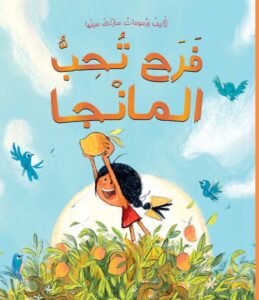 Farah Loves Mangoes
Farah Loves Mangoes 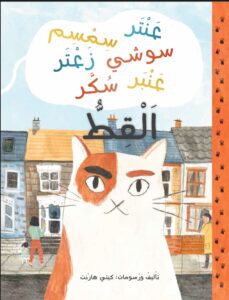 Archie Snuflekins Oliver Valentine Cupcake Tiberius
Archie Snuflekins Oliver Valentine Cupcake Tiberius 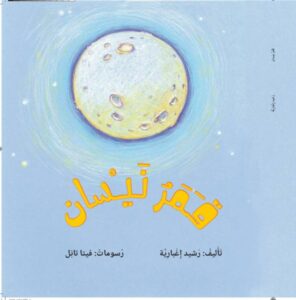 Nisan’s Moon
Nisan’s Moon 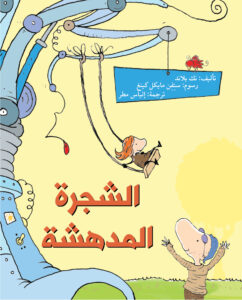 The Amazing Tree
The Amazing Tree 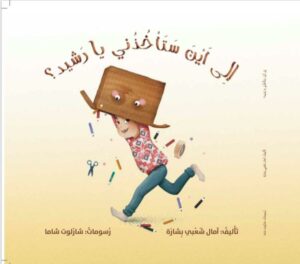 Where will you take me, Rashid?
Where will you take me, Rashid? 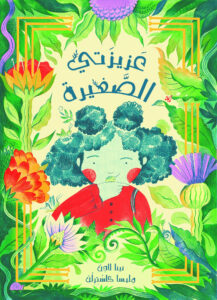 Dear Little One
Dear Little One 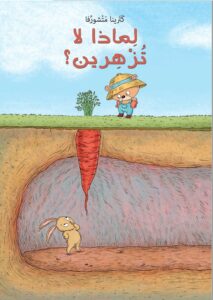 Why Don’t You Bloom?
Why Don’t You Bloom?  Book of Questions
Book of Questions 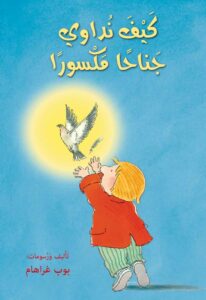 How to heal a broken wing
How to heal a broken wing 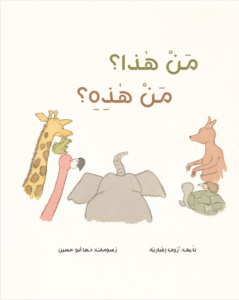 Who is this?
Who is this? 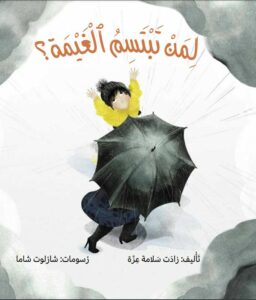 To whom the cloud smiles?
To whom the cloud smiles? 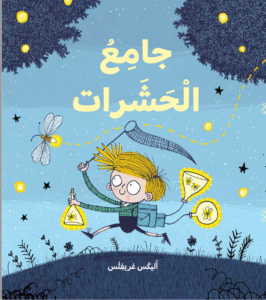 The Bug Collector
The Bug Collector 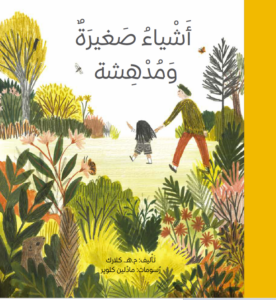 Tiny perfect things
Tiny perfect things 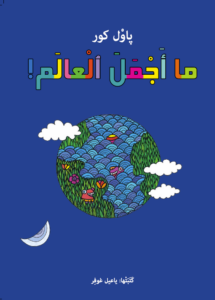 Beauty of the World
Beauty of the World 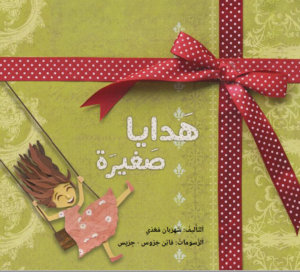 Small Presents
Small Presents 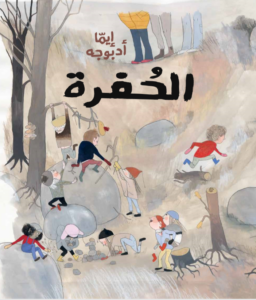 The Hole
The Hole 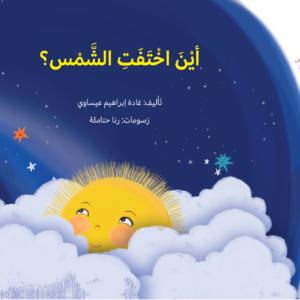 Where Did the Sun Go?
Where Did the Sun Go? 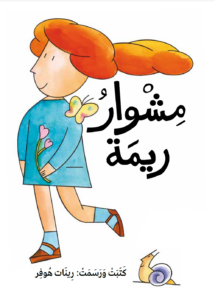 Rima’s walk
Rima’s walk 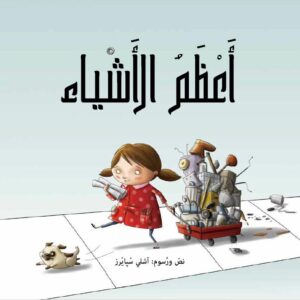 The Most Magnificent Thing
The Most Magnificent Thing  I Want an Elephant
I Want an Elephant 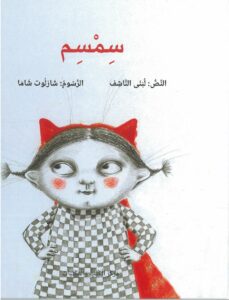 Simsim
Simsim 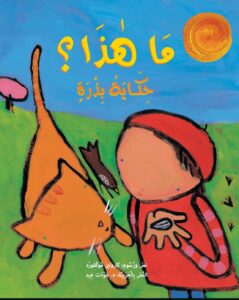 What’s This?
What’s This? 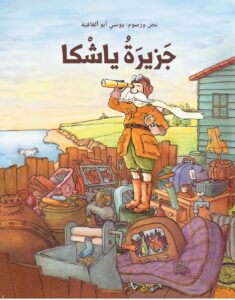 Yashka’s Island
Yashka’s Island 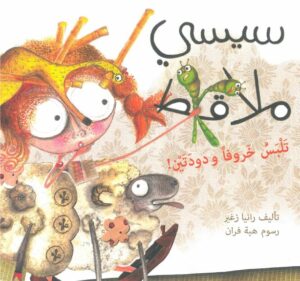 Sisi’s Clothespins
Sisi’s Clothespins 
